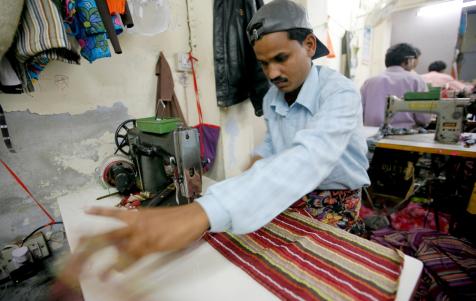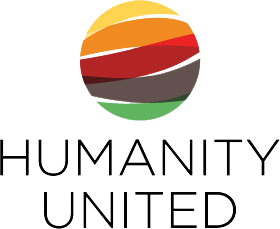Step 5. Reporting & Transparency
Brands are facing growing expectations from key stakeholders such as investors, consumers and public policy actors to report on and disclose information about their supply chain engagement. In some cases, this pressure is the result of new regulatory requirements that oblige brands to describe their efforts to eradicate slavery and human trafficking, such as the California Transparency in Supply Chains Act adopted in 2010.
Brands can report in many different ways. They can use their annual CSR reports, websites, published case studies and other means to tell stakeholders what they are doing. All reporting, however, is better when it is proactive, rather than reactive.
Brands should report on policy, performance and impact. They should give details about the preventive and corrective actions they are taking against forced labor, and the protective measures they have in place as part of their recruitment, selection and hiring process for migrant workers in their supply chains. They can describe new policy interventions and strategies, and share lessons learned in implementation. Transparent communication of this kind will satisfy the demands of regulatory requirements, and meet the expectations of key stakeholders.
The tools and links provided in the sidebar can help you navigate this process. Building on existing global frameworks, they offer detailed recommendations to improve the quality of corporate disclosure and transparency.
TOOL 1: Reporting and Transparency: Integrating Indicators of Forced Labor and Human Trafficking
Companies are increasingly being asked tough questions about the ways in which they are addressing risk in their supply chains. These questions are directed at risks found all along the supply chain, from those with first-tier suppliers to those at the base of the supply chain in commodity extraction. Stakeholders are looking for greater transparency on the worst forms of abuse, in particular human trafficking, forced labor, and the exploitation of the most vulnerable workers such as international and internal migrants.
Social responsibility reporting is at the heart of efforts to supply the information stakeholders are seeking on policies, performance and impact. Providing transparent, robust information on policies and programs to combat of the worst forms of abuse, like those facing migrant workers, is particularly important because these issues are complex and nuanced. To dispel the confusion, companies can take the lead in disclosing efforts to address risk and vulnerability.
The ways companies provide this information is evolving. In the past, companies tended to report on social responsibility efforts only after negative, highly publicized media reports or civil society campaigns. While this type of information is valuable to stakeholders, it has placed companies in a reactive and defensive position. More recently, a growing number of companies – including those in the garment, electronics and other industries – have shifted the dynamic, choosing to report publicly on forced labor, debt bondage and the risks of human trafficking facing migrant workers.
Depending on a company’s specific communications needs, different approaches can be used alone or in combination including formal reports, case studies, and websites. Regardless of which vehicles a company chooses, the effect is proactive communication that demonstrates the impact of a brand’s commitment to addressing tough issues.
REPORTING AND TRANSPARENCY: WHAT CAN BRANDS DO?
Brands have a number of options available to them to increase their transparency on the risks of human trafficking and forced labor in their supply chains. They can:
- Identify cases that have come to light involving this kind of abuse;
- Detail the steps taken to respond to such cases;
- Discuss the challenges that were faced, and how these challenges were overcome; and
- Clarify the next steps to be taken to ensure that this kind of problem does not occur again.
In addition to discussions of remediation to pre-existing issues, brands can illustrate examples of preventive action, including:
- Policy improvements to strengthen their code of conduct;
- Strengthening of critical business processes, such as recruitment, hiring and compensation.
- Improvements made to auditing protocols to better identify potential problems;
- Company or supply chain awareness raising efforts;
- Training and capacity building for suppliers; or
- Stakeholder engagement and partnerships to prevent human trafficking.
In Focus: Apple in Taiwan
In its 2011 Supplier Responsibility Progress Report, Apple addressed the risks of the abuse of migrant workers within the electronics industry supply chain. It reported on company efforts to protect foreign contract workers, following a 2008 audit discovery of problems linked to unethical hiring practices. Apple initiated investigations that revealed a complex recruitment process and excessive fees charged to some workers beyond legal limits, resulting in a risk of involuntary labor and debt bondage. In response, the company implemented measures including reimbursement to workers for excessive fees charged; a new policy limiting recruiter fees to one month’s net wages; new auditing procedures; and a supplier training program on direct hiring, onsite management of foreign workers and best practices in monitoring recruitment agencies. Apple used its 2011 report to identify the key findings of its audits and discuss its robust reaction to the abuses uncovered in its supply chain.
A MULTI-STAKEHOLDER REPORTING FRAMEWORK
Knowing what indicators to report on is a challenge for many brands. Striking the right balance between transparency and discretion on sensitive, complex topics can be difficult, which can lead to inconsistent CSR reporting.
In response to this, the Global Reporting Initiative (GRI) – a multi-stakeholder network of companies, trade unions, civil society groups and others – established the GRI Reporting Framework. This Framework sets out the basic principles for organizations to measure and report on their performance. The GRI Framework sets out Sustainability Reporting Guidelines and is the most widely used and accepted standard in sustainability reporting.
EMERGING PUBLIC POLICY FRAMEWORKS: REGULATING DISCLOSURE
Public policy actors have also entered the debate on transparency and disclosure by global brands. They have sought to regulate and standardize the information that companies provide, by proposing legislation that makes it necessary to disclose details about labor, human rights and environmental performance in the supply chain.
An example of this type of legislation is the California Transparency in Supply Chains Act. This Act – signed into law in October 2010 –requires that all retailers and manufacturers doing business in the state of California with annual revenues of more than $100 million disclose information about their efforts to eradicate slavery and human trafficking from their supply chains.
Under this law, businesses must publicly post information on their efforts in the following areas:
- Verification of product supply chains to evaluate and address risks of human trafficking and slavery;
- Performance of supplier audits to determine compliance with company standards; and
- Training of relevant company employees and management on human trafficking and slavery, particularly concerning the mitigation of risk within supply chains.
RECOMMENDATIONS FOR IMPROVING TRANSPARENCY ON BRAND ENGAGEMENT AGAINST RECRUITER-INDUCED FORCED LABOR AND HUMAN TRAFFICKING
Brands can produce “best-in-class” CSR reports by providing stakeholders specific information on efforts taken to address forced labor and human trafficking in their supply chains. Many existing reports are qualitative, providing only a snapshot of a specific incident or action taken. Others offer only partial coverage, focused for example on a new policy to the neglect of other forms of engagement.
By providing comprehensive reports, that address preventive and corrective actions; policies, performance and impact; vulnerable workers and regions; and the full scope of the red flags of forced labor provided in Brand Toolkit Section 2 on Raising Awareness and Building Capacity, your brand’s report will stand out from the growing crowd of CSR reports.
To help with this task, Verité offers the following set of recommendations that companies can review when considering on what and how to report on recruiter-induced forced labor.
Reporting Framework and Means of Communication
- Use the GRI Reporting Framework to align corporate reporting with accepted multi-stakeholder practice in transparency. Where relevant, ensure adherence to regulatory reporting obligations, e.g. the California Transparency in Supply Chains Act.
- Use different means to communicate your engagement: annual CSR reports; your corporate website; published case studies; and other material made publicly available to stakeholders. Publicize where this information can be found on your website. Make the information online easily accessible. Provide both qualitative and quantitative information.
Policy Development and Implementation
- Report on all relevant company-wide corporate responsibility, human resources and human rights policies that define corporate commitment to preventing forced labor and human trafficking. Identify the scope of application of these policies to company, supply chain and business partner operations; and countries and regions of operation.
- Indicate the extent to which these policies have been implemented, and report on corporate strategies for extending and embedding them across the company and supply chain.
- Identify time-bound goals for company performance on preventing forced labor and human trafficking in the supply chain.
Raising Awareness and Building Capacity
- Report on procedures related to awareness raising and training on company policies to prevent forced labor and human trafficking.
-
- Identify the specific content, methods and resources used for this training; its extent and scope within the company or supply chain; the level of engagement (e.g. managers, supervisors or workers); and the strategies identified for extending and embedding this training.
-
- Assessment and Audits
Describe risk assessment procedures and criteria, including their frequency and results.-
- Indicate known company- and sector-specific risks of forced labor and human trafficking, and practices that may undermine efforts to prevent such abuse.
-
- Discuss auditing procedures and other measures to assess brand performance and risk, including processes used to review impact at the individual company or supply chain operation level.
-
- Identify how assessment and audit results are applied, e.g. how they feed into corrective action plans and future policy review and improvement.
-
Preventive and Corrective Action
- Identify incidents of abuse discovered in the supply chain, and the corrective actions taken to address them.
-
- Report on corrective and preventive action at all levels, from the first tier of suppliers and their sub-contractors, including labor recruiters, to operations at your commodity base, if applicable.
- Describe the challenges faced in such engagement and the steps taken to overcome them. Identify relevant grievance procedures for migrant or foreign contract workers and processes established to address complaints received from stakeholders.
-
Multi-Brand and Multi-Stakeholder Engagement and Partnership
- Report on multi-stakeholder or multi-brand engagement and partnership efforts to encourage joint action against forced labor, including peer businesses, business partners, civil society groups, public policy actors and others, as relevant.

For Brands
Framework for Action: What Can Brands Do? >>
1. Improving Codes of Conduct and Company Policies >>
2. Raising Awareness and Building Capacity >>
3. Strengthening Assessments & Social Audits >>
4. Taking Corrective Action & Developing Systems Improvement Plans >>
5. Reporting & Transparency >>
6. Multi-Stakeholder & Multi-Brand Engagement >>
7. Public Policy Advocacy >>
For Suppliers
Framework for Action: What Can Suppliers Do? >>
1. Improving Codes of Conduct & Company Policies >>
2. Raising Awareness & Building Capacity >>
3. Screening & Evaluating Labor Recruiters >>
4. Managing Labor Recruiters & Monitoring for Ethical Recruitment & Hiring >>
5. Ensuring Good Practice in Human Resources Management >>
6. Establishing Effective Grievance Mechanisms & Protection for Whistleblowers >>
7. Taking Corrective Action & Developing Systems Improvement >>
